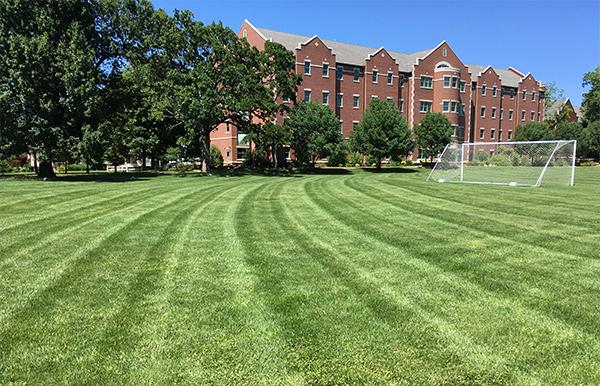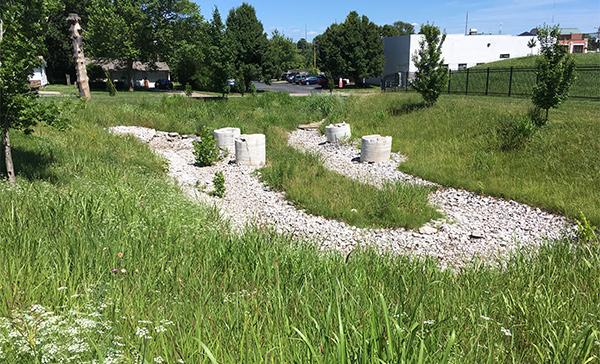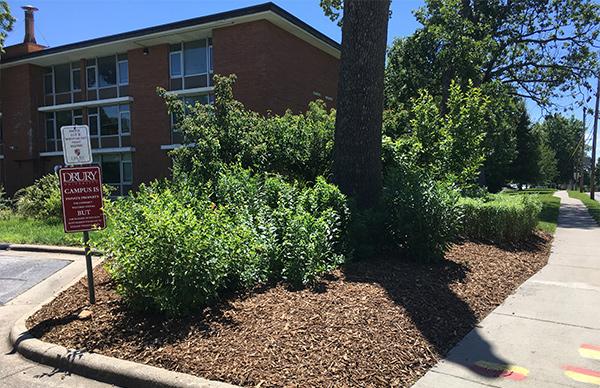Keep America Beautiful
Recently I was asked by a teacher here at Drury University to speak to a class studying the psychology of sustainability. While considering what I would say, I began to question where I came up with my environmental perspective. Turning back the clock in my head my first environmental memory was the early 1970's "Crying Indian" campaign by the Keep America Beautiful Foundation. I can remember getting choked up by this public service announcement. The image of the American Indian broken-hearted by the litter and pollution our society generated touched me deeply. If you are in my age group, you may have been touched by this ad as well.
Earth Day 1990
In my teenage years and as a young adult, I didn't do anything especially environmentally focused. I didn't litter, but I also didn't recycle, or think about how I might be impacting the environment. It wasn't until getting into groundskeeping that my 'eco focus' was to reemerge. In 1990 I was living in Alexandria, VA and working at George Mason University. 1990 was the 20th anniversary of the first major organized Earth Day. Living a short distance from Washington D.C. allowed me to go "downtown" to the Mall several times over the years for rallies of different sorts. While the first Earth Day was in 1970, my first was Earth Day +20. It was very powerful to be on the Mall with a massive crowd of 350,000 to draw attention to environmental issues. 27 years removed, I am still struck by this day.
2017
So where am I today? The short answer is it is hard to say. By some measurements, one could say I am part of the problem. I work in an industry that is fueled, grown, and maintained overwhelmingly by petroleum based products (as every industry is). On the other hand, by some measurements I am part of the solution. Drury University has reduced chemical inputs significantly, utilizes almost all organic refuse on campus, and has planted hundreds of trees in urban Springfield, MO over the past five years. The real truth is my eco-impact is a mixed bag. Both personally and professionally I try to be (what I consider that to be) environmentally conscious but it is difficult. I recycle, keep my tires properly inflated, plant natives, and occasionally use public transportation. But is that all there is?
It's Complicated
When you ask someone a difficult question, one that if answered honestly may indicate that someone might not have taken the smartest, or most ethical route, that person may attempt to muddy the water by saying "it's complicated". That's how I feel about my approach to sustainability. From a strictly environmental/sustainability standpoint, a typical modern landscape provides nowhere near the ecologic services that a natural ecosystem does (oak/hickory forest, savanna, wetland, etc.). But from a commercial or organizational standpoint, most people don't want to do business, or go to school, in a tallgrass prairie. So what the grounds manager ends up with is two opposing, and competing, imperatives. Introducing all the subtleties of stakeholders between these two ends adds to the complication.

Organizations will dictate conditions that result in drastically different landscapes. The landscape must meet those demands in "the greenest way possible" Above, Sunderland Intramural Sports Field. Below, Parking Lot 7 detention basin.

Eyes on the Prize
Reconciling environmentalism and acceptable landscaping can take many different guises. The proper answer for some sites may very well look like a wholly natural site. For other places it may look like just an average yard. The particular landscape isn't as important as the underlying objective of being as "green" as possible, in as many parts of your landscape operation as your organization allows. The key here is that becoming more environmentally compatible -- the context work processes are evaluated by -- can be the ultimate objective. When an operation removes the rigid demand of pursuing environmentalism and replaces it with a gentler yet still prevalent environmental outlook, voluntary compliance in many possible forms flourishes. This 'eyes on the prize' approach works better because a green attitude becomes woven into all aspects of the job.
Pragmatic, Not Dogmatic
I understand, and share, the passion of environmental movement. I firmly believe that by pursuing the greenest approach to all of our grounds management tasks we are being good stewards of the earth, and good stewards of our organization's objectives. What I don't agree with is the knee-jerk beliefs from the extremes on both sides of these issues as to how to move forward. It is better to incorporate the best ideas from everywhere in order to achieve the best results for our landscapes as a whole.

Smith Residence Hall naturalizing project. The greenest approach would be to reintroduce meadow. However, we wouldn't try that in front of administrative buildings.



0 Comments
Recommended Comments
There are no comments to display.